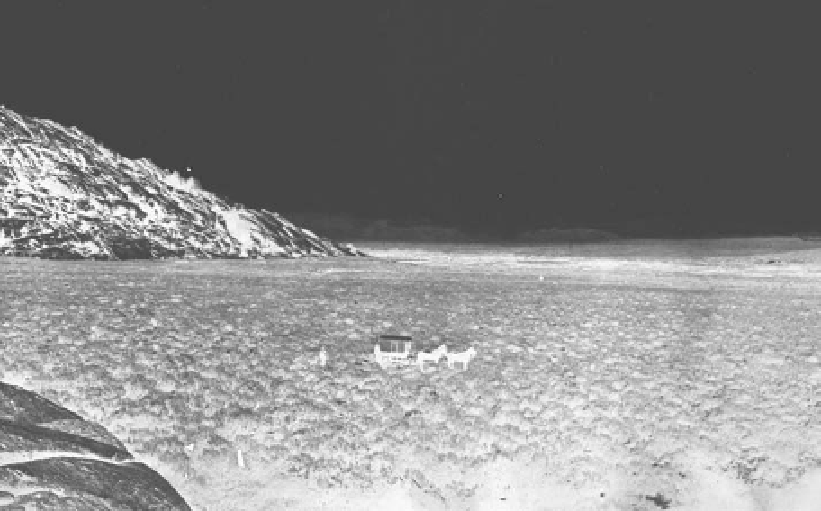Geoscience Reference
In-Depth Information
Effects of Livestock and Feral Horses on
Sagebrush Ecosystems
this plant. this climate has been found very favor-
able to the restoration of health, particularly in cases
of consumption; and possibly the respiration of air
so highly impregnated by aromatic plants may have
some influence.79
79
As discussed for grasslands, grazing is not a disturbance
unless too many animals are confined in too small an
area for too long a time. Bison, pronghorn, elk, deer,
and other herbivores were integral parts of the sage-
brush ecosystem for thousands of years, and they still
are in some places. Ungulate grazing does not generally
kill the dominant big sagebrush, though excess herbiv-
ory is known to cause declines in plant cover and, in
some places, an increase in undesired plants.
one of the most widely mentioned responses to live-
stock grazing is an increase in big sagebrush cover. How-
ever, sagebrush abundance should not be considered an
before the cattle drives from texas, John Fremont wrote
about his travels across Wyoming in 1842:
Fremont's cartographer, charles Preuss, wrote, “When
the wind blows, it is as though one were in a pharmacy.”
ten years later, in 1852, Platt and Slater wrote, “Along
the Sweet Water, most of the way, are narrow bottoms
of good grass. Adjacent to these bottoms are large, arid,
wild-sage plains, extending to the mountains.”
80
the same is true today (fig. 7.14). Big sagebrush clearly
has been a dominant feature of the Wyoming landscape
for hundreds of years. its abundance might have been
favored by grazing in some areas, because the removal
of palatable species reduced competition for sagebrush
seedlings. Such trends might have been most common
on the fringes of the Great Plains—for example, in por-
tions of the Powder River Basin, where summer rainfall
is favorable for grasses and forbs.
81
Livestock grazing can have dramatic effects on the
grasses and forbs associated with big sagebrush, but
drought is another important factor. Several studies
have found that conditions appearing to have resulted
from poor livestock management were actually caused
climate can cause great changes in plant growth and
one of the prominent characteristics in the face of
the country is the extraordinary abundance of the
“artemisias.” they grow everywhere—on the hills,
and over the river bottoms, in tough, twisted, wiry
clumps; and, wherever the beaten track was left, they
rendered the progress of the carts rough and slow. As
the country increased in elevation on our advance to
the west, they increased in size; and the whole air is
strongly impregnated and saturated with the odor of
camphor and spirits of turpentine which belongs to
Fig. 7.14. this photograph
along the Sweetwater River
east of Jeffrey city was taken
by William Henry Jackson
in 1870. the vegetation,
dominated by Wyoming big
sagebrush, is essentially the
same today (Johnson 1987).
the granitic Sweetwater
Rocks on the left have limber
pine and Rocky Mountain
juniper. elevation 6,200 feet.
U.S. Geological Survey photo
JWH00292.

Search WWH ::

Custom Search